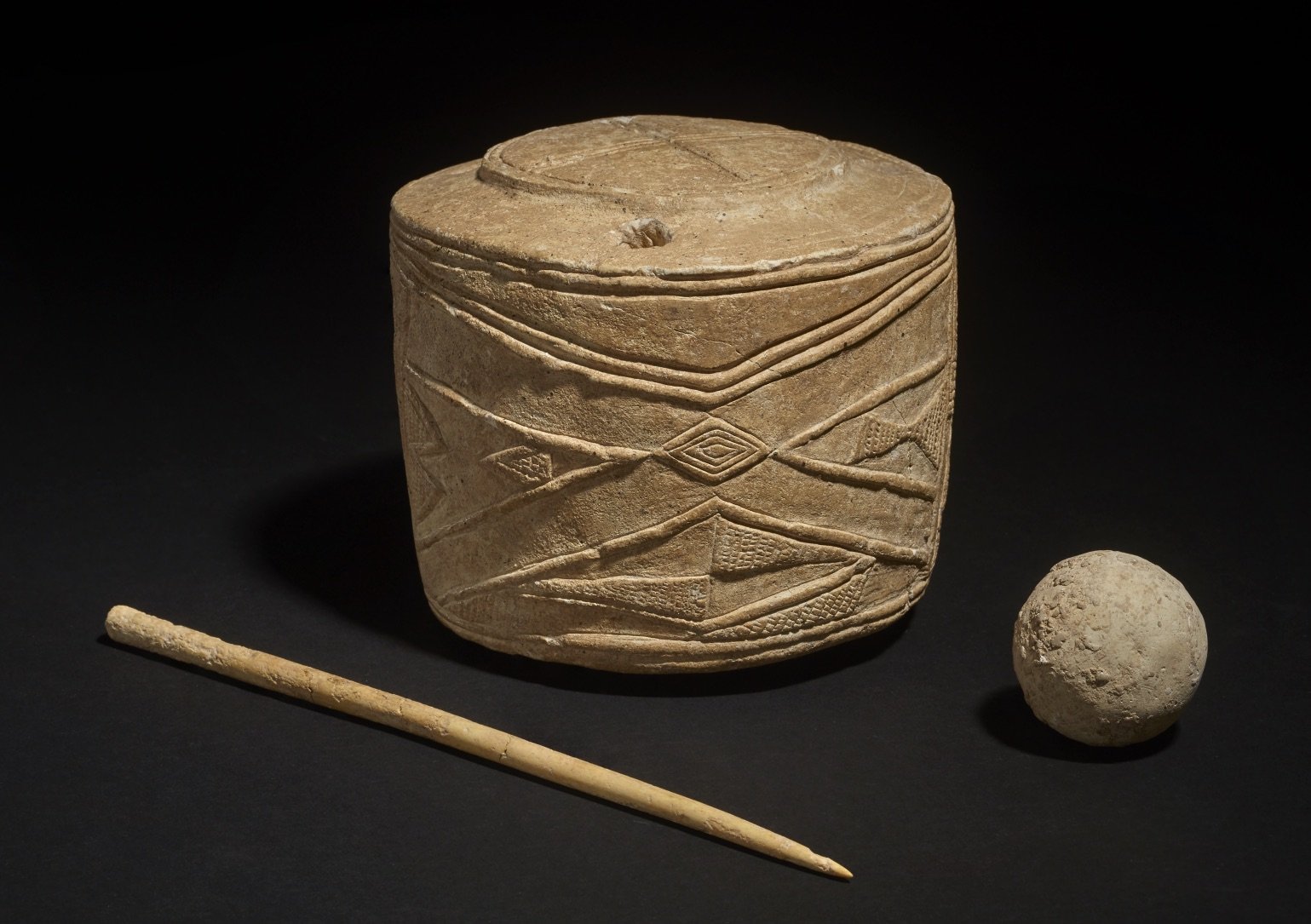
One of the oldest and most significant examples of prehistoric art ever found in the U.K. is going on view next week at the British Museum.
In 2015, researchers undertaking an excavation at a country estate near the village of Burton Agnes in East Yorkshire, about 200 miles outside London, unearthed a small chalk sculpture in a burial plot along with the remains of three children.
The 5,000-year-old Burton Agnes chalk drum, as it is called, is decorated with spiral patterns and other elaborate markings that researchers attribute to a distinct British and Irish style that flourished at the time Stonehenge was built.
In the grave, the drum was placed near the head of the eldest child, who was positioned holding the two younger sets of remains, who had been buried in an embrace.
The work will now go on view as part of the exhibition “The World of Stonehenge.”
Burton Agnes burial site. Photo: Allen Archaeology
Examples of Folkton Drums, named for the place where they were discovered, have been in the British Museum collection since 1889, but were previously dated to between 2500 and 2000 B.C.E.
Now, thanks to radiocarbon dating technology applied to the bones found in Burton Agnes, the drums appear to be around 500 years older.
The analysis confirmed that the drums were made during the first phase of Stonehenge construction, which means that while the monument’s stones were being transported from West Wales to Salisbury Plain, the site of Stonehenge, other communities around Britain and Ireland were also sharing artistic styles and belief systems across vast distances.
Burton Agnes chalk drum, detail. 3005–2890BC. Photo: © The Trustees of the British Museum
“The Folkton drums have long remained a mystery to experts for well over a century,” Neil Wilkin, the curator of “The World of Stonehenge” said in statement. “But this new example finally begins to give us some answers.”
Along with the drum, researchers uncovered a polished bone pin and chalk ball beneath the skull of one of the children, perhaps suggesting a favorite toy or a spiritual talisman. Those examples will also be in the British Museum show.
The Burton Agnes chalk drum will be shown alongside three other examples of Folkton Drums, and more than 400 other ancient objects that shed light on life at the time of Stonehenge’s construction.
“This is a truly remarkable discovery, and is the most important piece of prehistoric art to be found in Britain in the last 100 years,” Wilkin said.
See more images from the site of the discovery and of works below.
Burton Agnes archaeological dig. Photo: Allen Archeology
Burton Agnes chalk drum, top. 3005–2890BC. Photo: © The Trustees of the British Museum.
Chalk ball and bone pin 3005–2890BC. Photo: © The Trustees of the British Museum
“The World of Stonehenge” will be on view at the British Museum, Great Russell Street, London, February 17–July 17, 2022.